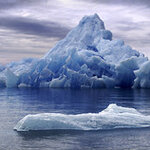Environment

Richard Hawkins, Canada Research Chair in Science, Technology and Innovation Policy, says there is no evidence that information technologies necessarily reduce our environmental footprint. His research will provide input into the OECD (Organization for Economic Cooperation and Development) initiative on IT and sustainability at the United Nations' Climate Change Conference in Copenhagen, Denmark later this year.
"It was once assumed that there was little or no material dimension to information technology, thus, it should be clean with minimal environmental impact," says Hawkins who is also a…

In a recent piece entitled Politics in the Guise of Pure Science, John Tierney asks whether scientists can be "honest brokers" on controversial and politically charged issues like global warming and climate change.
Citing various instances in which he casts various scientific authorities as backpedaling on their own initial catastrophic predictions, he criticizes the role scientific authorities establish in the political community. Among other things, he argues that scientists should acknowledge the promotion of their own agendas.
Of course scientists are interested…

In 2004, a scientific crew braced the cold and the odds to extract a sediment core from 400m below the seabed of the Arctic Ocean. The core showed that Fifty-five million years ago, deep in the Eocene, the North Pole was ice-free and enjoying tropical temperatures. It also told us that the temperature of the ocean was 20C, instead of the coolish –1.5C we see today, a truth that is hard to imagine today with all the hype around global warming -- even from bright folks like Al Gore.
The bottom end of that core helped explain the fossils found at Eocene sites around British Columbia,…

Anew study published in Conservation Biology says that more than 80 percent of the world's major armed conflicts from 1950-2000 occurred in regions identified as the most biologically diverse and threatened places on Earth.
The study found that more than 90 percent of major armed conflicts – defined as those resulting in more than 1,000 deaths – occurred in countries that contain one of the 34 biodiversity hotspots, while 81 percent took place within specific hotspots. A total of 23 hotspots experienced warfare over the half-century studied.
Examples of the nature-conflict connection include…

Coffee shrubs, both in themselves and because they are most often cultivated in the shade of large trees, can have a positive impact on plant and animal diversity in those parts of the landscape that are deforested and dominated by agriculture.
What constitutes a dilemma for consumers wishing to shop ecologically is that when coffee is grown in a forest, which is also common, the impact on diversity is negative, say researchers at the Department of Botany, Stockholm University, in Sweden, who recently published two articles about the role of coffee cultivation in conserving plants and animals…

University of Leicester biologist Dr David Harper has conducted research for over 25 years at Lake Naivasha in Kenya and says today that your cheap boyfriend's (unless you are are the cheap boyfriend, in which case he means you) cut-price Valentine roses which are exported for sale to the UK are 'bleeding that country dry.'
Harper claimed that cheap roses grown by companies that had no concern for the environment were having a devastating effect on the ecology of Lake Naivasha - the center of Kenya's horticultural industry. Instead, he urged UK shoppers to buy Fair Trade roses produced…

Economic, environmental, political and supply issues dictate that reliance on fossil fuels will be ephermeral on the scale of human history. While developments in telecommunications and the information age are touted as revolutionary (e.g., the Internet and World-Wide-Web), these breakthroughs will pale in their impact compared to the economic and political renaissance that a revolution in sustainable energy promise. How is it possible to engage the talent and resources necessary to drive the second industrial revolution?
Steven Chu, Secretary Of Energy and Nobel Prize…

Economic, environmental, political and supply issues dictate that reliance on fossil fuels will be ephermeral on the scale of human history. While developments in telecommunications and the information age are touted as revolutionary (e.g., the Internet and World-Wide-Web), these breakthroughs will pale in their impact compared to the economic and political renaissance that a revolution in sustainable energy promise. How is it possible to engage the talent and resources necessary to drive the second industrial revolution?
Steven Chu, Secretary Of Energy and Nobel Prize…

The jaguar, Panthera onca, has become an animal in danger of extinction over recent decades, due to the fragmentation and deterioration of its habitat, as well as hunting and illegal animal smuggling. As a result of this vulnerability, no individuals have been seen in the centre of Mexico since the start of the 20th Century. However, Mexican and Spanish scientists have now managed to photograph a male jaguar in this region.
The lack of published records about Panthera onca in the State of Mexico and concerns about whether this animal may have become extinct in the forests of the 674.10 km2…

22 January 2009 marks a new day on the EPA watch according to the U.S. Government Accountability Office (GAO):
EPA’S PROCESSES FOR ASSESSING AND CONTROLLING TOXIC CHEMICALS
EPA’s ability to protect public health and the environment depends on credible and timely assessments of the risks posed by toxic chemicals. Its Integrated Risk Information System, which contains assessments of more than 500 toxic chemicals, is at serious risk of becoming obsolete because EPA has been unable to keep its existing assessments current or to complete assessments of important chemicals of…